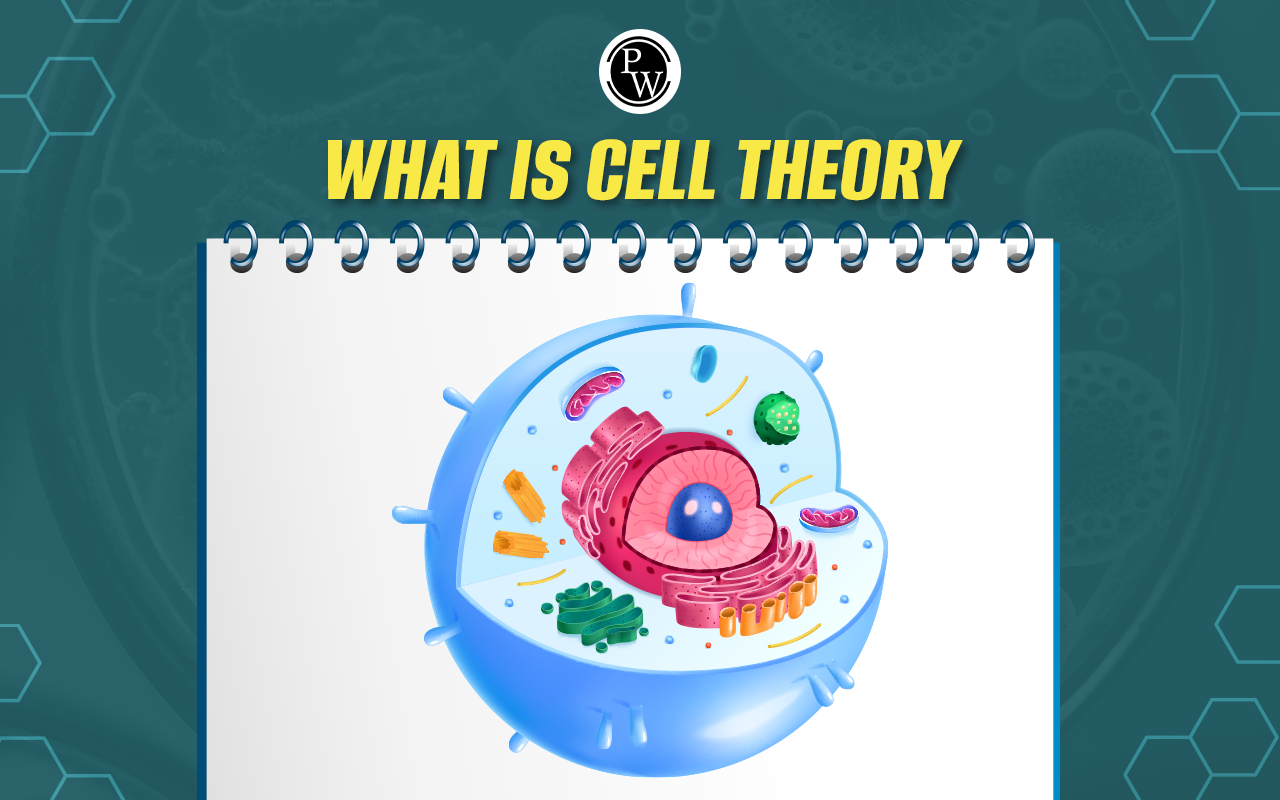
Penicillium is an important genus of fungi in the natural environment, food spoilage, and food and drug production. It is a common soil fungus that prefers cool and moderate climates. There are over 300 species of Penicillium, and it is best known as the fungus that produces penicillin, a molecule that has saved countless lives as an antibiotic. Some species of Penicillium are used to produce cheeses, including blue cheese.
Penicillium is also used to improve the flavor of some hams and sausages. It is also used to produce some important biotechnology-produced enzymes and macromolecules. The fungus is commonly present wherever organic material is available. In addition to the many benefits of Penicillium, they are also one of the primary causes of food spoilage. Penicillium NEET Biology Notes are provided in the article below.What is Penicillium?
Penicillium is a genus of ascomycetous fungi found in the mycobiome of various species. It plays a significant role in the natural environment, food spoilage, and the production of food and drugs. Certain Penicillium species produce penicillin, an antibiotic that inhibits the growth of specific types of bacteria. Other species are utilised in the production of cheese. According to the Dictionary of the Fungi, this widespread genus comprises over 300 species.Penicillium Classification
Penicillium species are classified based on their characteristics, such as morphology and genetic traits. This classification helps identify and understand the diverse species within this genus.| Penicillium Classification | |
|---|---|
| Classification Level | Characteristics |
| Phylum | Ascomycota |
| Class | Eurotiomycetes |
| Order | Eurotiales |
| Family | Trichocomaceae |
| Genus | Penicillium |
Penicillium Types
There are more than 350 identified species of Penicillium, a globally distributed genus of mould. Depending on their type, these species can have either beneficial or harmful effects. Here are several common types of Penicillium:- Penicillium camemberti: This species is utilized in the production of various cheeses, including Camembert, Brie, and Cambozola. It aids in breaking down the lactose and proteins in cheese, resulting in a creamy texture and strong flavour.
- Penicillium chrysogenum (formerly known as P enicillium notatum ): This mould produces the antibiotic penicillin discovered by Alexander Fleming in 1928. Penicillin revolutionised the treatment of bacterial infections.
- Penicillium roqueforti: This species is employed in the production of blue cheeses like Roquefort, Danish Blue, and Stilton. It spreads throughout the cheese, forming veins of blue mould and imparting a robust, pungent flavour.
- Penicillium expansum: This species is a common mould responsible for food spoilage, particularly in fruits and vegetables, causing them to decay and become mushy.
- Penicillium digitatum : Another citrus pathogen, this mould causes green mould rot on citrus fruits.
- Penicillium verrucosum: This species is a contaminant of grains and produces ochratoxin A, a toxin that can be harmful to both humans and animals.
Penicillium Structure
The structure of Penicillium, a genus of mould, is characteristic of filamentous fungi. It consists of multicellular filaments called hyphae, which collectively form a network known as a mycelium. These hyphae are typically septate, meaning they are divided into compartments by cross walls called septa. Penicillium hyphae can be seen as thin, branching structures at the microscopic level. These hyphae secrete enzymes that break down organic matter, allowing the fungus to obtain nutrients. Under certain conditions, Penicillium species produce specialized structures called conidiophores, which bear conidia (asexual spores). These conidia are responsible for the dispersal of the fungus and can be easily carried by air currents. Overall, the structure of Penicillium reflects its role as a versatile and widespread group of fungi, with adaptations that allow it to thrive in various environments and interact with a wide range of substrates.Penicillium Characteristics
Penicillium, a genus of moulds, plays a pivotal role in a range of ecological and biotechnological processes. Below are key characteristics of Penicillium:- Morphology: Penicillium species typically exhibit a brush-like or tufted morphology, attributed to the formation of conidiophores, which are structures that bear asexual spores (conidia) in chains.
- Colony Appearance: Colonies of Penicillium species display a variety of colours, including blue, green, yellow, and white, contingent on the species and growth medium.
- Habitat: Penicillium species are commonly found in soil, decomposing organic matter, air, and various organic substrates. They are also known to inhabit food products, leading to spoilage.
- Reproduction: Penicillium reproduces both sexually and asexually. Asexual reproduction involves the production of conidia, while sexual reproduction entails the formation of ascospores within a specialized structure known as the ascus.
- Toxin Production: Certain Penicillium species, such as Penicillium verrucosum and Penicillium expansum, can produce mycotoxins, which can contaminate food and pose health hazards to humans and animals.
- Biotechnological Importance: Penicillium species are utilised to produce various enzymes, antibiotics (e.g., penicillin), and food products (e.g., cheese and soy sauce). They are also employed in bioremediation processes to degrade environmental pollutants.
- Significance in Medicine : Penicillium notatum, the species from which penicillin was first extracted, revolutionised medicine by providing the first widely used antibiotic, saving countless lives.
- Genetic Diversity: The genus Penicillium exhibits high diversity, with over 300 recognised species, rendering it valuable for investigating fungal evolution and diversity.
- Economic Impact: While some Penicillium species are beneficial, others can lead to economic losses by spoiling food products during storage and transit.
- Research Interest: Penicillium species remain a research subject in various fields, including biotechnology, medicine, and ecology, owing to their diverse metabolic capabilities and ecological significance.
Penicillium Reproduction
Penicillium, renowned for its discovery of penicillin, employs three methods of reproduction: vegetative, asexual, and sexual.- Vegetative Reproduction: This straightforward method can occur accidentally. When the mold's body, known as the mycelium, breaks into fragments, each fragment can develop into a complete Penicillium organism.
- Asexual Reproduction: This is the most common mode of reproduction for Penicillium, and it operates as follows:
- Spore Formation: Penicillium develops specialized structures called conidiophores, which act as spore factories.
- Conidia Production: At the tips of these branches, conidiophores produce chains of single-celled spores known as conidia.
- Dispersal: These lightweight conidia can disperse through the air, carried by wind or insects. If they settle on a suitable nutrient source, such as fruit, they germinate and establish a new Penicillium colony.
- Sexual Reproduction: Although less common, sexual reproduction in Penicillium is more intricate. It manifests in two variations based on the species:
The Process: In either scenario, the sex organs fuse, and nuclei from both sides merge. This process does not entail a direct exchange of genetic material. Instead, the nuclei coexist within shared cytoplasm for a period (dikaryon phase). Subsequently, nuclear fusion generates a diploid zygote, which undergoes meiosis, leading to the formation of sexual spores called ascospores within a sac-like structure known as an ascus. These ascospores can germinate into new Penicillium organisms upon release, contributing to increased genetic diversity. Penicillium ensures its survival and successful proliferation in suitable environments through these versatile reproductive strategies.
Penicillium Uses
Penicillin refers to a class of antibiotics derived from the Penicillium mould. It is widely prescribed due to its effectiveness against various bacterial infections. Penicillin disrupts the synthesis of bacterial cell walls, inhibiting their growth and reproduction. Common applications of penicillin include the treatment of:- Streptococcal pharyngitis (Strep throat)
- Otitis media (Ear infections)
- Dermatological infections (Skin infections)
- Urinary tract infections (UTIs)
- Pneumonia
- Gonorrhoea
- Syphilis
- Lyme disease
Penicillium Economic Importance
Penicillium, a genus of mould, is of great economic importance due to its varied uses in industry, agriculture, and medicine. Here are some key points regarding the economic significance of Penicillium:- Antibiotic Production: Penicillium species, especially Penicillium chrysogenum, are essential for producing the antibiotic penicillin. This discovery by Alexander Fleming transformed medicine, saving numerous lives and establishing the basis for modern antibiotic therapy.
- Food Production: Various Penicillium species are crucial in food production. Penicillium roqueforti and Penicillium camemberti make blue cheeses and Camembert, respectively, giving them distinctive flavours and textures.
- Biological Control: Some Penicillium strains are used as agricultural biocontrol agents. They can inhibit the growth of pathogenic fungi and bacteria, helping protect crops from diseases and reducing the need for chemical pesticides.
- Enzyme Production: Penicillium species produce various enzymes, including amylases, proteases, and cellulases, which have applications in the food, textile, and biofuel industries.
- Bioremediation: Certain Penicillium species can degrade various environmental pollutants, such as hydrocarbons and pesticides, making them valuable for bioremediation purposes.
- Research and Biotechnology: Penicillium species are extensively studied for their metabolic diversity and ability to produce a wide range of bioactive compounds. They are also used as model organisms in various research fields, including genetics and molecular biology.
Sexual Reproduction In Flowering Plants
Physics Wallah provides various NEET online courses , including free batches and coaching with experienced faculty. These courses assist NEET exam preparation and come with benefits and test papers. Enroll Now for effective NEET preparation.| NEET Exam Important Links | |
|---|---|
| NEET Syllabus | NEET Biology Diagrams |
| NEET Biology MCQ | NEET Biology Chapter wise Weightage |
| NEET Biology Notes | NEET Previous Year Question papers |
Penicillium FAQs
What are the uses of Penicillium?
Penicillium is a genus of fungi with various species. Some species are used to produce penicillin, an antibiotic used to treat bacterial infections. Additionally, certain species are employed in cheesemaking, as well as in the production of enzymes and organic acids.
Where is Penicillium found?
Penicillium fungi are commonly found in soil, on decaying vegetation, compost, wood, dried foodstuffs, spices, dry cereals, fresh fruits, and vegetables. They are also found growing on building materials in water-damaged environments, as well as in indoor air and house dust.
What is the common name for Penicillium?
In America, Penicillium is commonly known as molds. They are significant contributors to food spoilage, particularly species of the subgenus Penicillium.
Is Penicillium mold harmful to humans?
Penicillium species are among the most prevalent fungi in the environment and are generally considered non-pathogenic to humans. However, in individuals with compromised immune systems, they can become virulent pathogens and may lead to fatalities.
When was penicillin first used?
After the Oxford team purified enough penicillin, they tested its clinical efficacy. In February 1941, the first person to receive penicillin was an Oxford policeman suffering from a severe infection with abscesses throughout his body.
How is penicillin made?
The Penicillium mold naturally produces penicillin. Scientists discovered how to cultivate Penicillium mold in deep fermentation tanks by adding a specific type of sugar and other ingredients. This process significantly increased the yield of Penicillium.
🔥 Trending Blogs
Talk to a counsellorHave doubts? Our support team will be happy to assist you!

Check out these Related Articles
Free Learning Resources
PW Books
Notes (Class 10-12)
PW Study Materials
Notes (Class 6-9)
Ncert Solutions
Govt Exams
Class 6th to 12th Online Courses
Govt Job Exams Courses
UPSC Coaching
Defence Exam Coaching
Gate Exam Coaching
Other Exams
Know about Physics Wallah
Physics Wallah is an Indian edtech platform that provides accessible & comprehensive learning experiences to students from Class 6th to postgraduate level. We also provide extensive NCERT solutions, sample paper, NEET, JEE Mains, BITSAT previous year papers & more such resources to students. Physics Wallah also caters to over 3.5 million registered students and over 78 lakh+ Youtube subscribers with 4.8 rating on its app.
We Stand Out because
We provide students with intensive courses with India’s qualified & experienced faculties & mentors. PW strives to make the learning experience comprehensive and accessible for students of all sections of society. We believe in empowering every single student who couldn't dream of a good career in engineering and medical field earlier.
Our Key Focus Areas
Physics Wallah's main focus is to make the learning experience as economical as possible for all students. With our affordable courses like Lakshya, Udaan and Arjuna and many others, we have been able to provide a platform for lakhs of aspirants. From providing Chemistry, Maths, Physics formula to giving e-books of eminent authors like RD Sharma, RS Aggarwal and Lakhmir Singh, PW focuses on every single student's need for preparation.
What Makes Us Different
Physics Wallah strives to develop a comprehensive pedagogical structure for students, where they get a state-of-the-art learning experience with study material and resources. Apart from catering students preparing for JEE Mains and NEET, PW also provides study material for each state board like Uttar Pradesh, Bihar, and others
Copyright © 2025 Physicswallah Limited All rights reserved.
Get App









